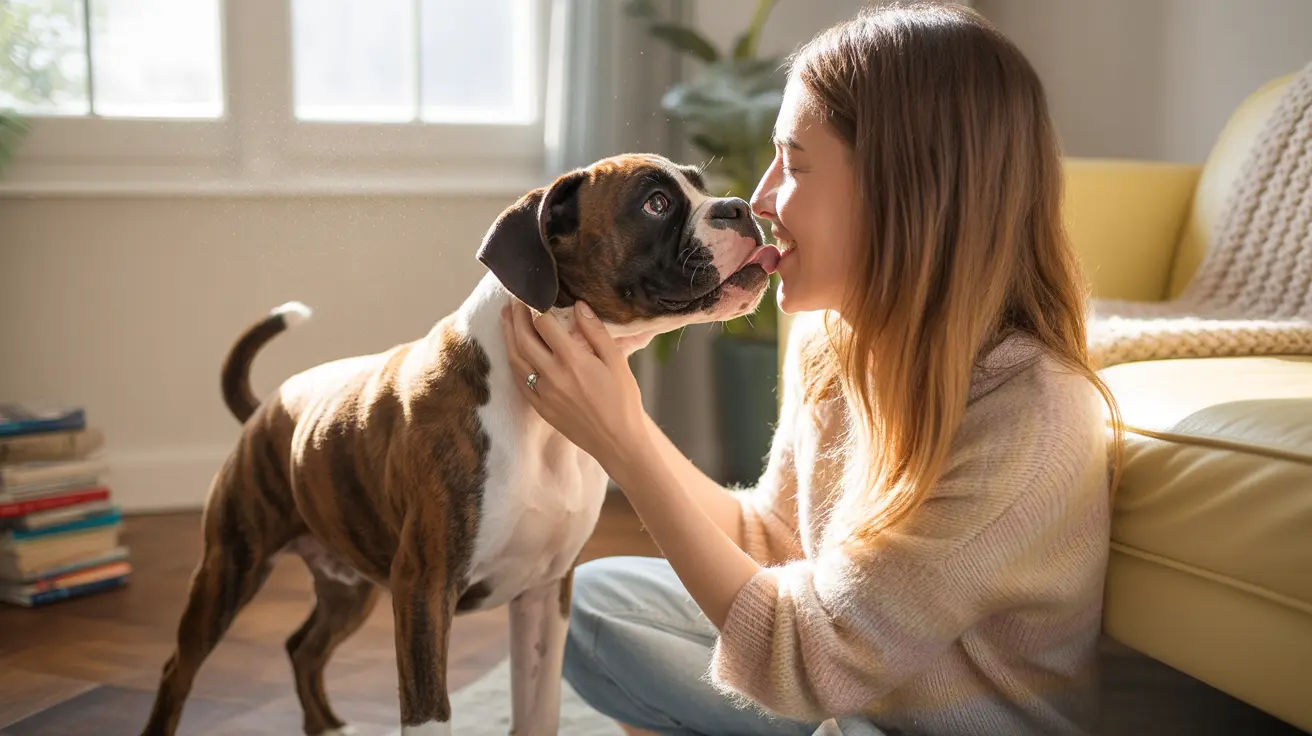The Science Behind Dogs and Human Kisses
Dogs communicate differently from humans, using body language, scent, and various vocalizations to express themselves. In the canine world, there's no natural equivalent to human kissing. However, dogs are remarkably adaptable and can learn to associate our kisses with positive feelings through consistent exposure and positive reinforcement.
Research shows that dogs are highly attuned to human emotions and can read our facial expressions, tone of voice, and body language. This emotional intelligence helps them understand the loving intent behind our kisses, even if the gesture itself isn't innate to them.
How Dogs Learn to Understand Kisses
Most dogs come to recognize kisses as expressions of affection through a process of association. When we kiss our dogs, we typically:
- Use a gentle, loving tone of voice
- Offer soft touches and pets
- Give them treats or praise
- Display positive body language
These combined signals help dogs understand that kisses are part of a positive interaction with their human family members.
Reading Your Dog's Response to Kisses
Positive Signs
Dogs who enjoy or accept kisses might show:
- Relaxed body language
- Wagging tail
- Leaning into the affection
- Returning the gesture with gentle licks
- Staying close for more attention
Warning Signs of Discomfort
Watch for these signals that indicate your dog may not enjoy kisses:
- Turning their head away
- Showing the whites of their eyes
- Yawning or licking their lips
- Stiffening their body
- Moving away from you
Building Trust Through Appropriate Affection
The key to showing affection to your dog is understanding and respecting their individual preferences. Some dogs naturally enjoy close facial contact, while others prefer different forms of attention. Building trust means paying attention to your dog's signals and adjusting your behavior accordingly.
Alternative Ways to Show Love
If your dog isn't comfortable with kisses, try these alternative expressions of affection:
- Gentle ear scratches
- Belly rubs
- Interactive playtime
- Calm presence and companionship
- Training sessions with positive reinforcement
Frequently Asked Questions
Do dogs understand what it means when humans kiss them?
While dogs don't naturally understand kisses, they can learn to associate them with affection through positive experiences and consistent interaction with their owners.
How can I teach my dog to enjoy being kissed?
Gradually introduce kisses while providing treats and praise, always respecting your dog's comfort level. Never force physical affection, and always pair kisses with positive experiences.
What are the signs that my dog is uncomfortable with kisses?
Look for signs like turning away, showing whale eyes (white of the eyes), yawning, lip licking, or moving away. These are clear indicators that your dog is uncomfortable with the interaction.
Can I use kisses as a way to show love to my dog if they're not socialized to it?
It's best to start slowly and respect your dog's boundaries. Some dogs may never enjoy kisses, and that's okay. Focus on forms of affection that your dog responds to positively.
Are there other effective ways to show affection to my dog if they don't like kisses?
Yes! Many dogs prefer ear scratches, belly rubs, gentle petting, playing games, or simply spending quality time together. Pay attention to what makes your dog happy and focus on those activities.
Conclusion
While dogs may not inherently understand human kisses, many learn to associate them with love and affection through positive experiences. The key is to respect your dog's individual preferences and find ways to show affection that make both you and your furry friend comfortable and happy.






